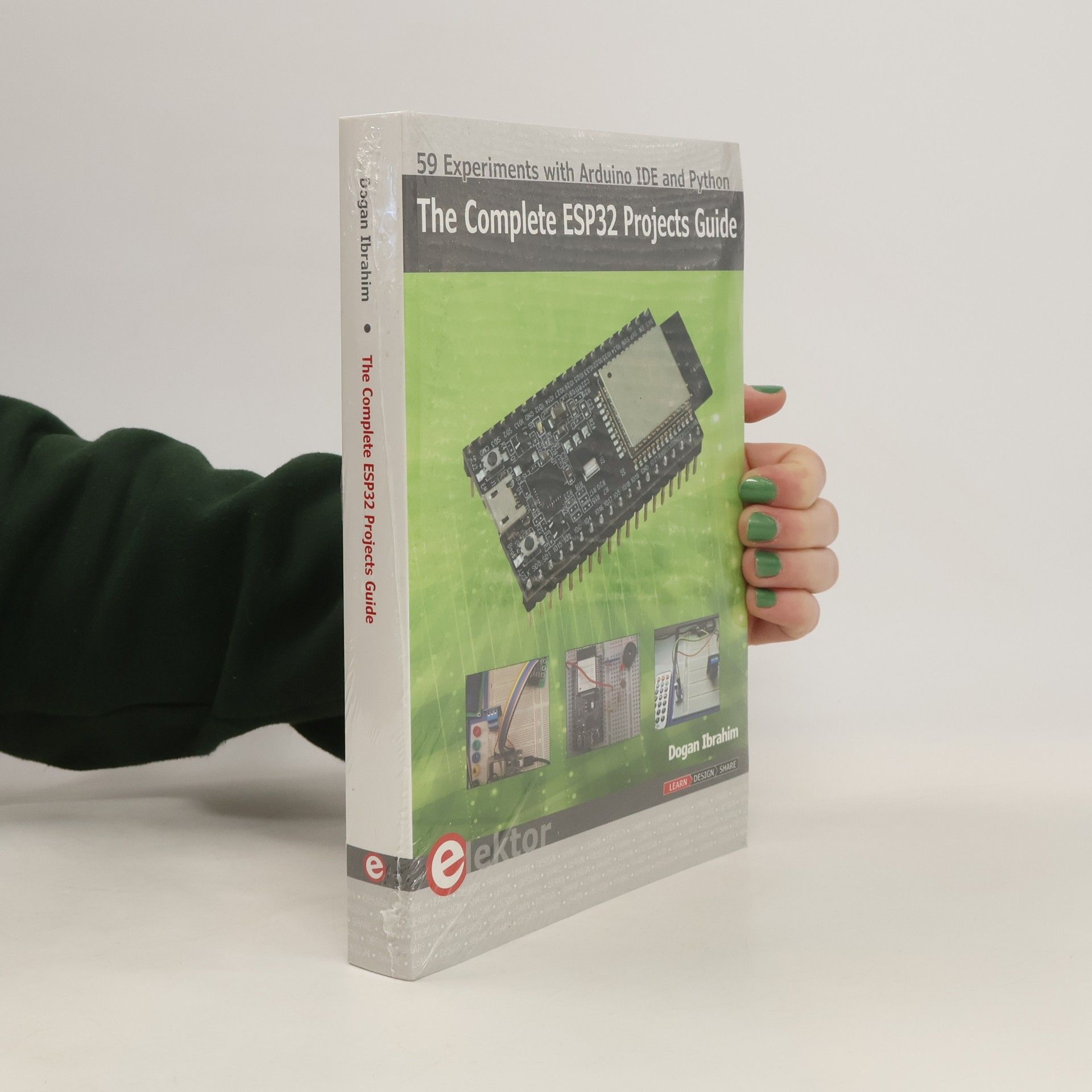§MICROCOMPUTER SYSTEMS §PIC32 MICROCONTROLLER SERIES §C PROGRAMMING FOR 32-BIT PIC MICROCONTROLLERS §mikroC Pro For PIC32 BUILT-IN LIBRARY FUNCTIONS §PIC32 MICROCONTROLLER DEVELOPMENT TOOL §MICROCONTROLLER PROGRAM DEVELOPMENT §SIMPLE PIC32 MICROCONTROLLER PROJECTS §ADVANCED PIC32 PROJECTS §APPENDIX MPLAB AND PIC32 COMPILER
Dogan Ibrahim Boeken






PIC Basic Projects
- 367bladzijden
- 13 uur lezen
Covering the PIC BASIC and PIC BASIC PRO compilers, this title provides an easy-to-use toolkit for developing applications with PIC BASIC. It is packed with simple and advanced projects which show how to program a variety of interesting electronic applications using PIC BASIC.
ARM-Based Microcontroller Multitasking Projects
Using the FreeRTOS Multitasking Kernel
Most microcontroller-based applications nowadays are large, complex, and may require several tasks to share the MCU in multitasking applications. Most modern high-speed microcontrollers support multitasking kernels with sophisticated scheduling algorithms so that many complex tasks can be executed on a priority basis. ARM-based Microcontroller Multitasking Projects: Using the FreeRTOS Multitasking Kernel explains how to multitask ARM Cortex microcontrollers using the FreeRTOS multitasking kernel. The book describes in detail the features of multitasking operating systems such as scheduling, priorities, mailboxes, event flags, semaphores etc. before going onto present the highly popular FreeRTOS multitasking kernel. Practical working real-time projects using the highly popular Clicker 2 for STM32 development board (which can easily be transferred to other boards) together with FreeRTOS are an essential feature of this book. Projects include: LEDs flashing at different rates; Refreshing of 7-segment LEDs; Mobile robot where different sensors are controlled by different tasks; Multiple servo motors being controlled independently; Multitasking IoT project; Temperature controller with independent keyboard entry; Random number generator with 3 tasks: live, generator, display; home alarm system; car park management system, and many more.
Raspberry Pi for Radio Amateurs
Program and build RPi-based ham station utilities, tools, and instruments
Nucleo Boards Programming with the STM32CubeIDE
Hands-on in more than 50 projects
- 498bladzijden
- 18 uur lezen
STM32 Nucleo family of processors are manufactured by STMicroelectronics. These are low-cost ARM microcontroller development boards. This book is about developing projects using the popular STM32CubeIDE software with the Nucleo-L476RG development board. In the early Chapters of the book the architecture of the Nucleo family is briefly described. The book covers many projects using most features of the Nucleo-L476RG development board where the full software listings for the STM32CubeIDE are given for each project together with extensive descriptions. The projects range from simple flashing LEDs to more complex projects using modules, devices, and libraries such as GPIO, ADC, DAC, I²C, SPI, LCD, DMA, analogue inputs, power management, X-CUBE-MEMS1 library, DEBUGGING, and others. In addition, several projects are given using the popular Nucleo Expansion Boards. These Expansion Boards plug on top of the Nucleo development boards and provide sensors, relays, accelerometers, gyroscopes, Wi-Fi, and many others. Using an expansion board together with the X-CUBE-MEMS1 library simplifies the task of project development considerably. All the projects in the book have been tested and are working. The following sub-headings are given for each Project Title, Description, Aim, Block Diagram, Circuit Diagram, and Program Listing for the STM32CubeIDE. In this book you will learn about What you need
Raspberry Pi Pico for Radio Amateurs
Program and build RPi Pico-based ham station utilities, tools, and instruments
Although much classical HF and mobile equipment is still in use by large numbers of amateurs, the use of computers and digital techniques has now become very popular among amateur radio operators. Nowadays, anyone can purchase a €5 Raspberry Pi Pico microcontroller board and develop many amateur radio projects using the “Pico” and some external components. This book is aimed at amateur radio enthusiasts, Electronic Engineering students, and anyone interested in learning to use the Raspberry Pi Pico to shape their electronic projects. The book is suitable for beginners in electronics as well as for those with wide experience. Step-by-step installation of the MicroPython programming environment is described. Some knowledge of the Python programming language is helpful to be able to comprehend and modify the projects given in the book. The book introduces the Raspberry Pi Pico and gives examples of many general-purpose, software-only projects that familiarize the reader with the Python programming language. In addition to the software-only projects tailored to the amateur radio operator, Chapter 6 in particular presents over 36 hardware-based projects for “hams”,
Get Started with the MAX78000FTHR Development Board
Build your own AI microcontroller applications from scratch
The MAX78000FTHR from Maxim Integrated is a small development board based on the MAX78000 MCU. The main usage of this board is in artificial intelligence applications (AI) which generally require large amounts of processing power and memory. It marries an Arm Cortex-M4 processor with a floating-point unit (FPU), convolutional neural network (CNN) accelerator, and RISC-V core into a single device. It is designed for ultra-low power consumption, making it ideal for many portable AI-based applications.This book is project-based and aims to teach the basic features of the MAX78000FTHR. It demonstrates how it can be used in various classical and AI-based projects. Each project is described in detail and complete program listings are provided. Readers should be able to use the projects as they are, or modify them to suit their applications. This book covers the following features of the MAX78000FTHR microcontroller development Onboard LEDs and buttons External LEDs and buttons Using analog-to-digital converters I²C projects SPI projects UART projects External interrupts and timer interrupts Using the onboard microphone Using the onboard camera Convolutional Neural Network